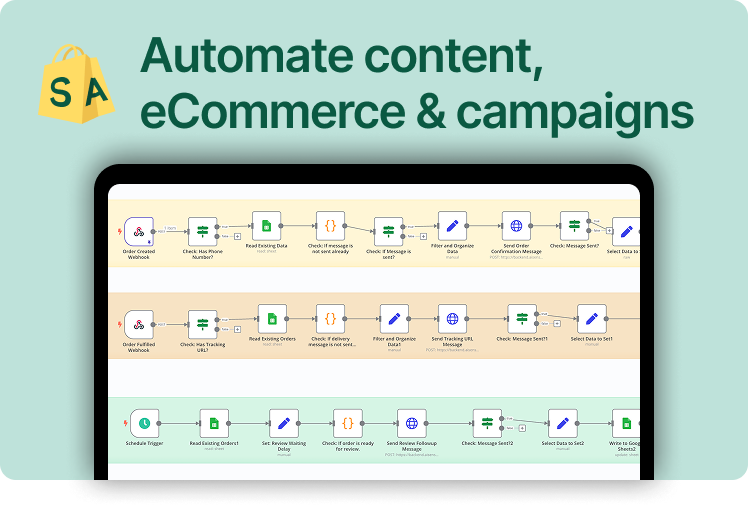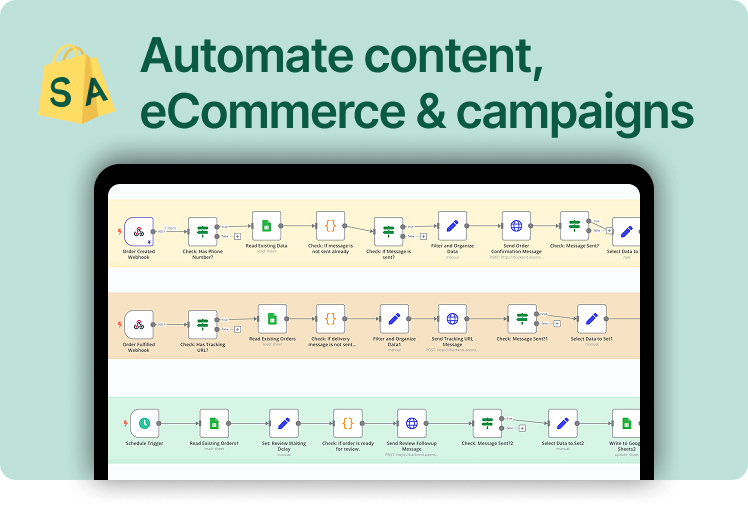This modular automation system, built in n8n.io, brings together multiple marketing and e-commerce workflows into one powerful, integrated ecosystem. From identifying trending topics and writing SEO-rich content to analyzing campaign data, managing Shopify collections, and publishing directly to Shopify - each sub-workflow handles a core task in your growth stack.
Together, they enable a fully automated, insight-driven workflow that boosts visibility, efficiency, and output across platforms:
- The automation workflow generates campaign performance reports from Google Ads. It starts by retrieving account and campaign data, processes and formats the information, and then uses OpenAI to summarize the insights. The summarized results are exported to a text file or sheet. The top branch handles BigQuery reporting, while the lower branch dynamically processes campaign stats per account.
- This is a fully automated weekly reporting workflow for online marketing performance. It pulls data from Google Analytics, Google Ads, and Meta Ads for the past 7 days and compares it to the same period last year. The data is summarized and processed using an OpenAI Chat Model, then sent via email and Slack. Each platform has its own sub-workflow for data collection, formatting, comparison, and summarization.
- The workflow helps generate SEO-optimized Shopify collection pages for any Shopify store. It starts by checking keyword opportunities with SEMrush and logs valuable ones into a Google Sheet. Then it gathers all existing Shopify collections and active products, removes HTML tags from descriptions, and uses an OpenAI model to summarize content. Finally, it updates and appends new or improved collection page data back into a central Google Sheet.
- This automation creates SEO blog posts based on trending topics. It starts by finding current trends, identifying high-volume keywords, and selecting a relevant blog topic. The flow then handles research, blog writing, internal linking, and metadata preparation (slug, title, meta description). Finally, it finds a cover image, publishes the post to WordPress, and logs the result in a Google Sheet.
- This workflow removes duplicate products from Shopify based on SKU. It starts by fetching all active products, then filters out the duplicates. These duplicates are logged in a Google Sheet and archived one by one using a loop. A short wait is added to manage Shopify API limits.
By connecting these workflows into a unified automation engine, we’ve transformed siloed tasks into a streamlined growth loop. Whether it’s surfacing the next blog opportunity, syncing SEMrush keywords with Shopify, or summarizing ad performance weekly—this system adapts and scales with your needs. Less manual work, more momentum - this is what modern marketing automation should feel like.




